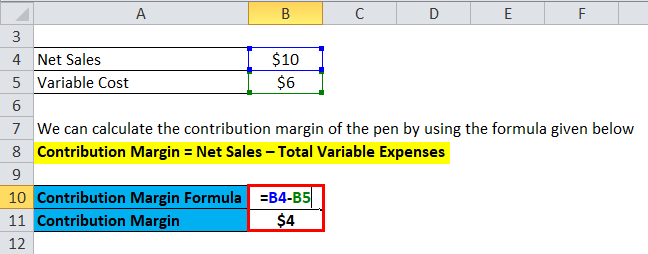
Buying items such as machinery is a typical example of a fixed cost, specifically a one-time fixed cost. Regardless of how much it is used and how many units are sold, its cost remains the same. However, these fixed costs become a smaller percentage of each unit’s cost as the number of units sold increases. The Contribution Margin is the incremental profit earned on each unit of product sold, calculated by subtracting direct variable costs from revenue. It is important to note that this unit contribution margin can be calculated either in dollars or as a percentage. To demonstrate this principle, let’s consider the costs and revenues of Hicks Manufacturing, a small company that manufactures and sells birdbaths to specialty retailers.
How to Calculate Contribution per Unit
Now, this situation can change when your level of production increases. As mentioned above, the per unit variable cost decreases with the increase in the level of production. So, you should produce those goods that generate a high contribution margin.
Calculate Contribution Margin Ratio
It includes the rent for your building, property taxes, the cost of buying machinery and other assets, and insurance costs. Whether you sell millions of your products or 10s of your products, these expenses remain the same. Fixed and variable costs are expenses your company accrues from operating the business. Other financial metrics related to the Contribution Margin Ratio include the gross margin ratio, operating margin ratio, and net profit margin ratio. These ratios provide insight into the overall profitability of a business from different perspectives.
Total Cost
We’ll next calculate the contribution margin and CM ratio in each of the projected periods in the final step. Thus, it will help you to evaluate your past performance and forecast your future profitability. Accordingly, you need to fill in the actual units of goods sold for a particular period in the past. However, you need to fill in the forecasted units of goods to be sold in a specific future period. This is if you need to evaluate your company’s future performance.
Contribution Margin Ratio Formula

Calculating contribution margin (the difference between sales revenue and variable costs) is an effective financial analysis tool for making strategic business decisions. Overall, per unit contribution margin provides valuable information when used with other parameters in making major business decisions. A key characteristic of the contribution margin is that it remains fixed on a per unit basis irrespective of the number of units manufactured or sold. On the other hand, the net profit per unit may increase/decrease non-linearly with the number of units sold as it includes the fixed costs. For example, in retail, many functions that were previously performed by people are now performed by machines or software, such as the self-checkout counters in stores such as Walmart, Costco, and Lowe’s.
Another common example of a fixed cost is the rent paid for a business space. A store owner will pay a fixed monthly cost for the store space regardless of how many goods are sold. Here, we are calculating the contribution margin on a per-unit basis, but the same values would be obtained bench accounting high paying jobs compensation and experts network if we had used the total figures instead. The greater the contribution margin (CM) of each product, the more profitable the company is going to be, with more cash available to meet other expenses — all else being equal. As you can see, the contribution margin per-unit remains the same.
- In these examples, the contribution margin per unit was calculated in dollars per unit, but another way to calculate contribution margin is as a ratio (percentage).
- These core financial ratios include accounts receivable turnover ratio, debts to assets ratio, gross margin ratio, etc.
- Remember, that the contribution margin remains unchanged on a per-unit basis.
- However, a general rule of thumb is that a Contribution Margin above 20% is considered good, while anything below 10% is considered to be relatively low.
- All you have to do is multiply both the selling price per unit and the variable costs per unit by the number of units you sell, and then subtract the total variable costs from the total selling revenue.
If the fixed costs have also been paid, the remaining revenue is profit. The difference between the selling price and variable cost is a contribution, which may also be known as gross margin. It helps investors assess the potential of the company to earn profit and the part of the revenue earned that can help in covering the fixed cost of production.
11 Financial is a registered investment adviser located in Lufkin, Texas. 11 Financial may only transact business in those states in which it is registered, or qualifies for an exemption or exclusion from registration requirements. 11 Financial’s website is limited to the dissemination of general information pertaining to its advisory services, together with access to additional investment-related information, publications, and links. Aside from the uses listed above, the contribution margin’s importance also lies in the fact that it is one of the building blocks of break-even analysis. With that all being said, it is quite obvious why it is worth learning the contribution margin formula. The 60% CM ratio implies the contribution margin for each dollar of revenue generated is $0.60.